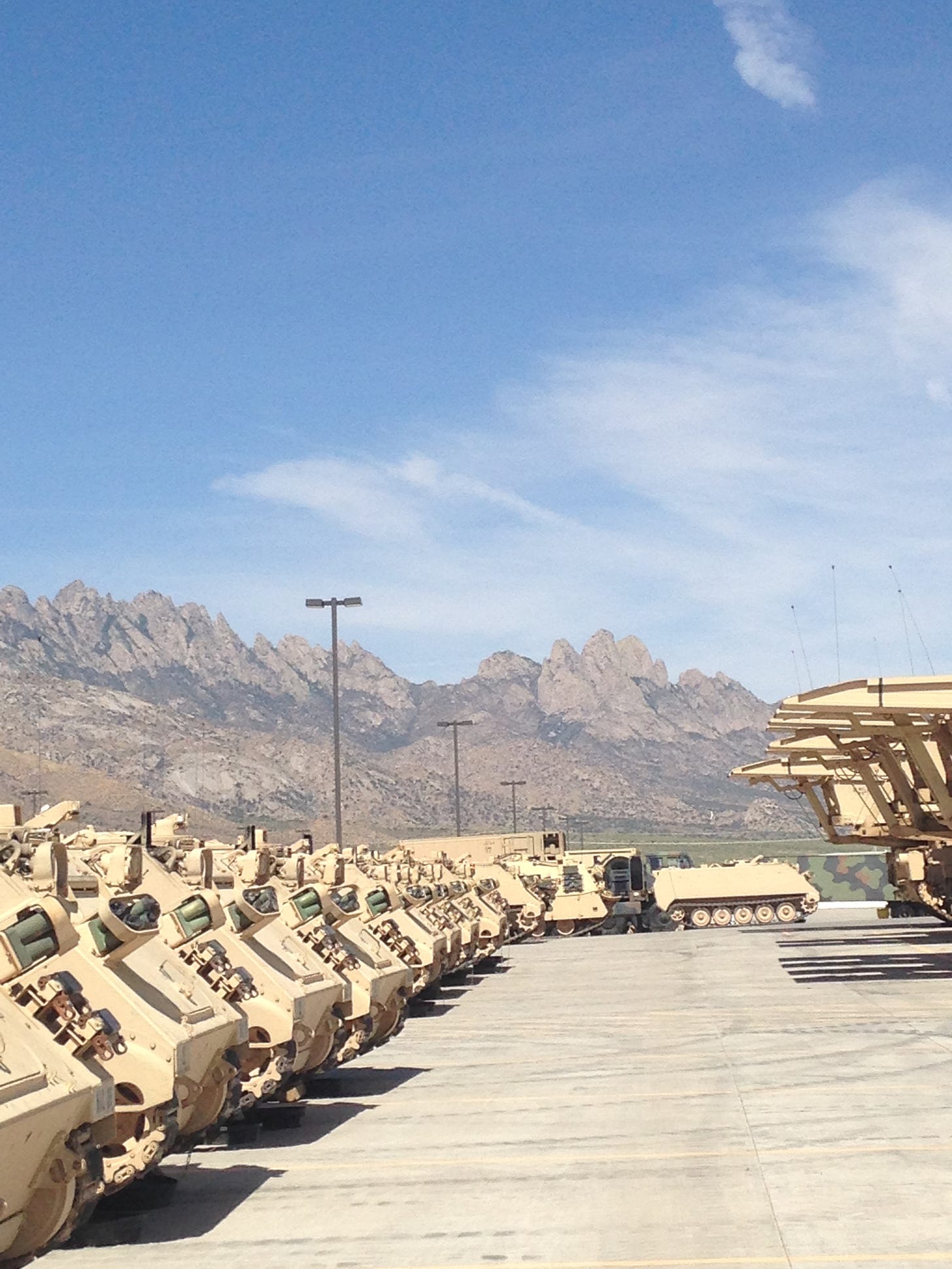
2025 is officially upon us, and while there are many upcoming events I’m not looking forward to, there are many more that I am.
Specifically: July 15th, 2025 marks the end of the 10-year period in which the Department of Defense owns my voice.
Some Background
If you’ve spent some time reading my musings, you may be aware that I had a scholarship-for-service that paid for graduate school. The award is stupidly named SMART (Science, Mathematics, and Research for Transformation)1, and it requires awardees to work for the DoD for the same number of years the DoD paid for school.
Did I basically lease my soul to the government for a short period of time? Yes, yes I did. Was it worth it? Absolutely.
I was recruited to the TRADOC (Training and Doctrine) Analysis Center at White Sands Missile Range, NM (TRAC-WSMR)2. Here are some fast facts to set the scene:
My commitment was for two years
My degree did not qualify for the scholarship, but they made an exception because my body was warm and my brain was malleable
I had absolutely no business being in this role
Where Was I?
After two years on the missile range, I was free to return to Colorado and begin a new career, one that actually interested me— but I wasn’t actually free. Part of the contract I signed days before graduating from college required me to provide the organization annual updates of my whereabouts and career developments, and at any time during my 14 years of participation (Phase I was the two years during school, Phase II was two years after school when I was employed at TRAC-WSMR, and Phase III has been the 10 years post-service commitment), the DoD could have requested that I record anything on their behalf.
But come July, I’m a free gal! And in honor of that milestone, I’m going to share with you a snapshot of my experience at an event that the Army calls Greening but my husband calls Army Fantasy Camp.
Army Fantasy Camp
In August 2014, about halfway through my service commitment, I was sent to Fort Polk, Louisiana for a week to pretend to be in the Army. Luckily, my sponsoring facility was home to several other young scholars, so I was in good company for what was about to ensue.
Nobody has officially corroborated this notion, but I’m convinced they sent us to Fort Polk to give us a sense of what many of our service folk endure while on active duty. In the unbearable heat and humidity of Louisiana in August, we had Army PT in the mornings (which, amongst other activities, required us to do dozens of push ups in hot grassy patches that were covered in fire ants), slept in the barracks (nice ones, there was air conditioning), and had the luxury of consuming MREs.
We honed our map-reading skills and learned how to manually calculate the information needed to fire a howitzer:
We navigated through obstacle courses:
And we learned to move as a squadron in tactical paintball:
In the Army medical training exercise, my friend Dan willingly volunteered to allow an Army medic to lube up a flexible plastic tube (about the same width as a boba straw, and about a foot and a half long) and slide it through his nostril and down his throat. It was unclear who gagged more, Dan or the rest of us who had to watch. I’ll never forget the stream of glistening tears that poured down Dan’s face, framing his look of horror as he tried to speak while intubated. And somehow, the extubation process was even worse—Dan reported swallowing the lube remnants for an extended period of time post-extubation. What a champ!
Once Dan recovered from the experience, the medic asked for two more volunteers. While everyone froze in place, I made the mistake of taking a slight step backward, in a feeble attempt to become another face in our very small crowd. My subtle movement caught the medic’s eye and I was voluntold to exhibit our next lesson: tourniquets.
To demonstrate how quickly a properly applied tourniquet could stop blood flow, Dan was tasked with taking my pulse before, during, and after the experience. To get started, the medic wrapped the tourniquet around my bicep, but before he secured the strap, Dan determined that I had no pulse. It turns out Dan just needed a quick CPR and first-aid lesson, so with the newfound knowledge about how to find a pulse under his belt, we were ready to go.
Here’s a video for your viewing pleasure (unfortunately, it’s blurry and there’s no sound):
It was fascinating to experience how quickly one loses feeling when a tourniquet is applied. I thought it would be like when your leg falls asleep after sitting cross legged for too long, but I was sorely mistaken. You can see in the video that it became increasingly painful with each twist of the strap, but I was able to still control my hand when the circulation halted, which got me thinking: how functional can tourniquetted limbs be?
To find out, I thought it prudent to have a three-legged tourniquet race, and for some reason, the group obliged.
Surprisingly, we managed to stay upright the entire race, mostly because the tourniquet around our shared third leg wasn’t effective at all (it wound up slipping down to our ankles). However, our free independent legs were complete duds and the lack of circulation led to a wobbly stumble across the finish line.
Line of Duty
One of the most intriguing experiences I had that week was witnessing real military training exercises. I’m not talking about obstacle courses and weoponry, or our mini lesson that had me gazing down the barrel of a howitzer. Rather, I’m talking about the training vignettes that are acted out on elaborate Hollywood-esque sets. We spent an entire day exploring a recreated middle eastern village, filled with actors and military personnel alike. At one point, there was a reenactment of a suicide bombing, special effect explosives and all: in a plume of smoke, the primary actor was quickly replaced with an amputee actor, who was swiftly doused in fake blood and guts, just in time for the medic-in-training to enact life-saving measures. It was a sobering experience that felt far too real, and I guess that’s the point of the exercise.
But even cooler than that real-world application of military training was the rest of the back-lot, which held even more elaborate sets than the village recreation. There, we were escorted through a maze of different environments including a burning building (contained, but very real flames) and a body farm (with the awful smells of decay and decomposition filtered through the ventilation system).
I had never spent much time considering how officers in the Army prepared for active duty, and I can’t speak to what training looks like on other bases, but I was truly blown away by how realistic these experiences felt. I left Fort Polk with a newfound appreciation and respect for those who make it through the training process and go on to serve our country.
Shenanigans
Most of my time working for the Army felt like a particularly serious endeavor. After all, I worked on a missile range. There were protocols to adhere to that were—and remain—entirely foreign to me and I had a lot to learn about the military in general. For example, I didn’t understand the Army’s organizational structure, rankings, or titles, and certainly couldn’t recognize what each patch on a uniform symbolized. I learned all some of that at one point (and promptly purged it from my memory when my service commitment ended), and more importantly, I eventually learned to strike a balance between my military professional presentation and how I typically operate in the real world. At GreeningArmy Fantasy Camp, each of these identities came to a head, and I realized that my experience grappling with those conflicting personalities was prevalent in even the most seemingly serious of military personnel.
Army Fantasy Camp was designed to be a peek into the world of active duty. While we were a group of mostly civilian employees, we did have a couple Captains and a Major with us, presumably for supervision purposes. I knew these officers from work, but I also knew them socially—we hung out at local bars and breweries on weekends and we trekked together through trails around base to train for the Bataan Memorial Death March.
The 18-year-old Second Lieutenants who picked us up from the airport, however, were entirely unfamiliar.
It was clear they were tasked with being on their best, most professional behavior—being our drivers and guides were their first official assignments as Army officers. We watched them share nervous glances with each other when Major Thomas dropped his first f-bomb minutes after we loaded into the van at the airport, and no matter how much chiding and ribbing occurred throughout the week, those young men attempted (and succeeded!) to remain stoic and austere.
So you can imagine their discomfort when, three days into our stay, Major Thomas demanded to borrow the keys to the van so he could take us to a drive-thru daiquiri shack (you know, for the full Louisiana experience): their commanding officer left them responsible for these vehicles, but a higher ranking officer had incongruent plans. After careful consideration, they reluctantly handed over the keys and pretended that they didn’t know where we were headed.
After almost an entire week of schlepping our group around to various activities around the base and putting up with our obnoxious dearth of knowledge, those young men were granted an unexpected opportunity to engage in our shenanigans. On the last full day at Fort Polk, it was finally time to put all that we had learned to the test in the form of tactical paintballing. As a consolation prize for putting up with us, Major Thomas invited them to join us in the field.
To say they sought revenge for all the discomfort our group caused them throughout the week would be quite the understatement. Those two stoic young men dissolved into giddy boys the minute they realized they were allowed to have some fun. When our combat commenced, they each, without pause, took aim and fired maniacally in our general direction. Ten years later, I still have a permanent bruise on my shin from one of those paintballs, which serves as a constant reminder of the distance we’ve all traveled.
For students in qualifying areas of study, the benefits are pretty hard to pass up, if you manage to make it as a finalist: full tuition at any accredited institution, a stipend to cover room and board (and then some), an additional stipend for books and health insurance, summer internships at your sponsoring facility, mentorship opportunities, and a guaranteed job waiting for you upon graduation.
I was an Operations Research and Systems Analyst in the Irregular Warfare Division, where I helped model population perception of insurgency in undisclosed locations, amongst other things.






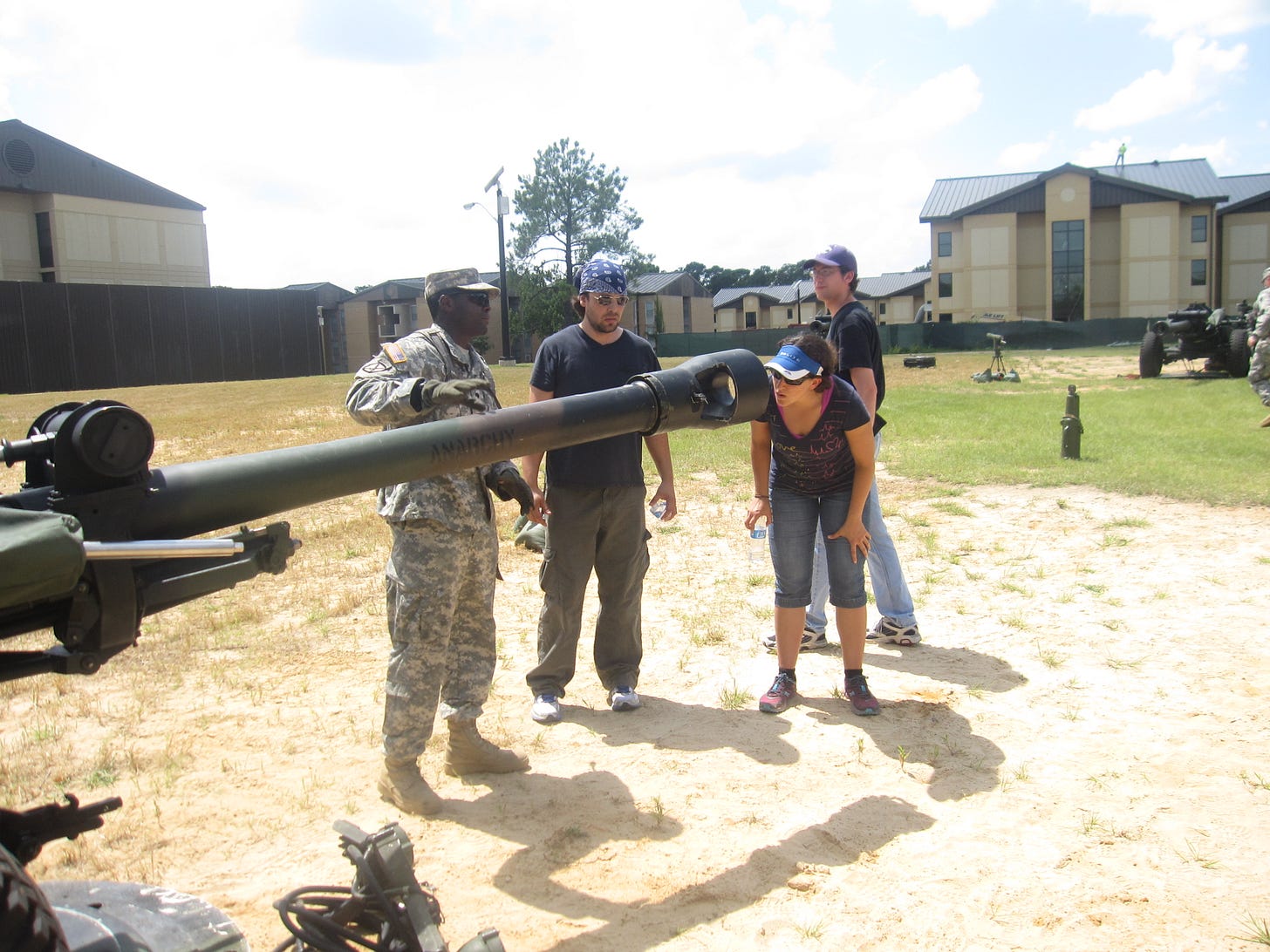
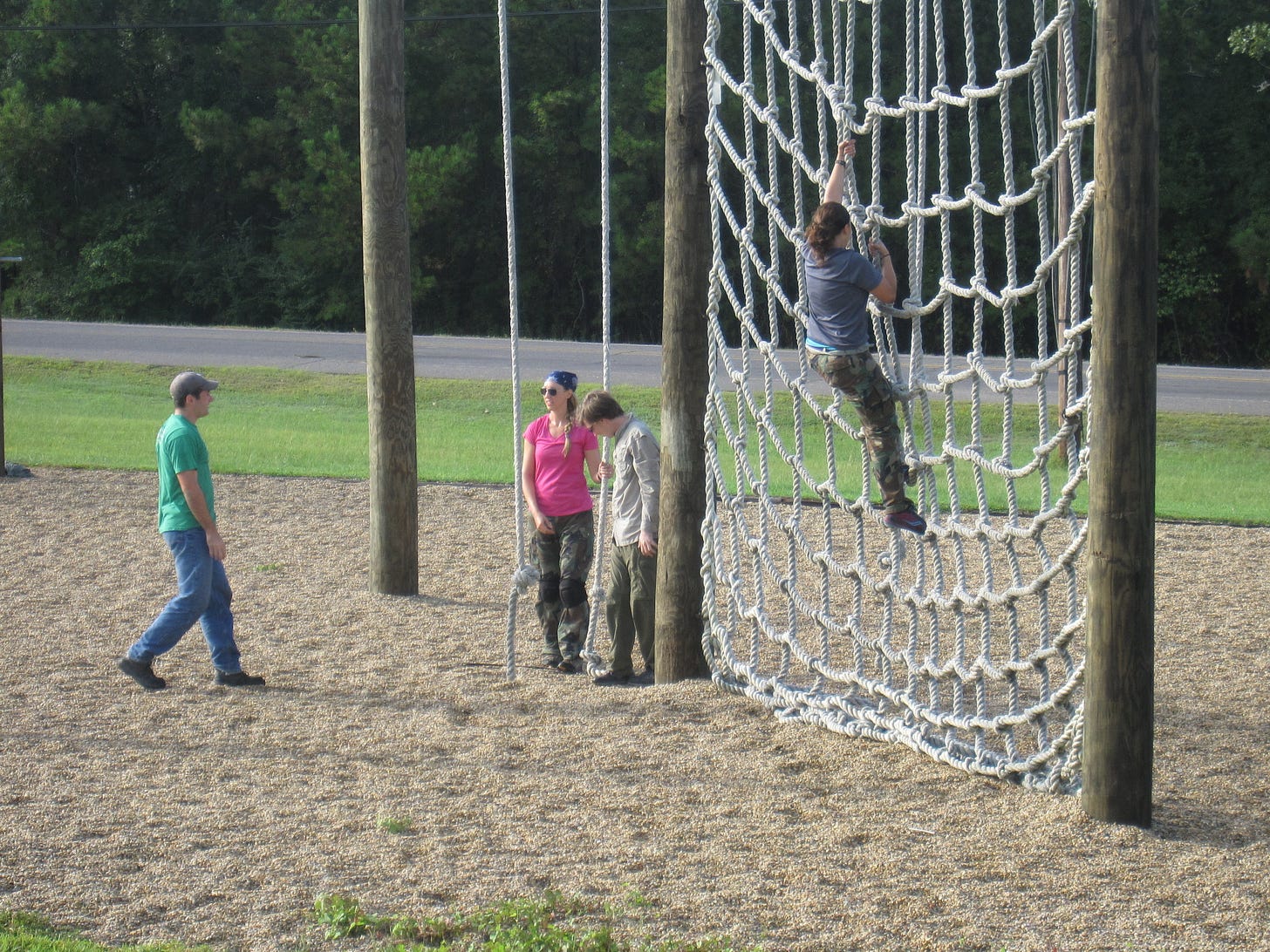
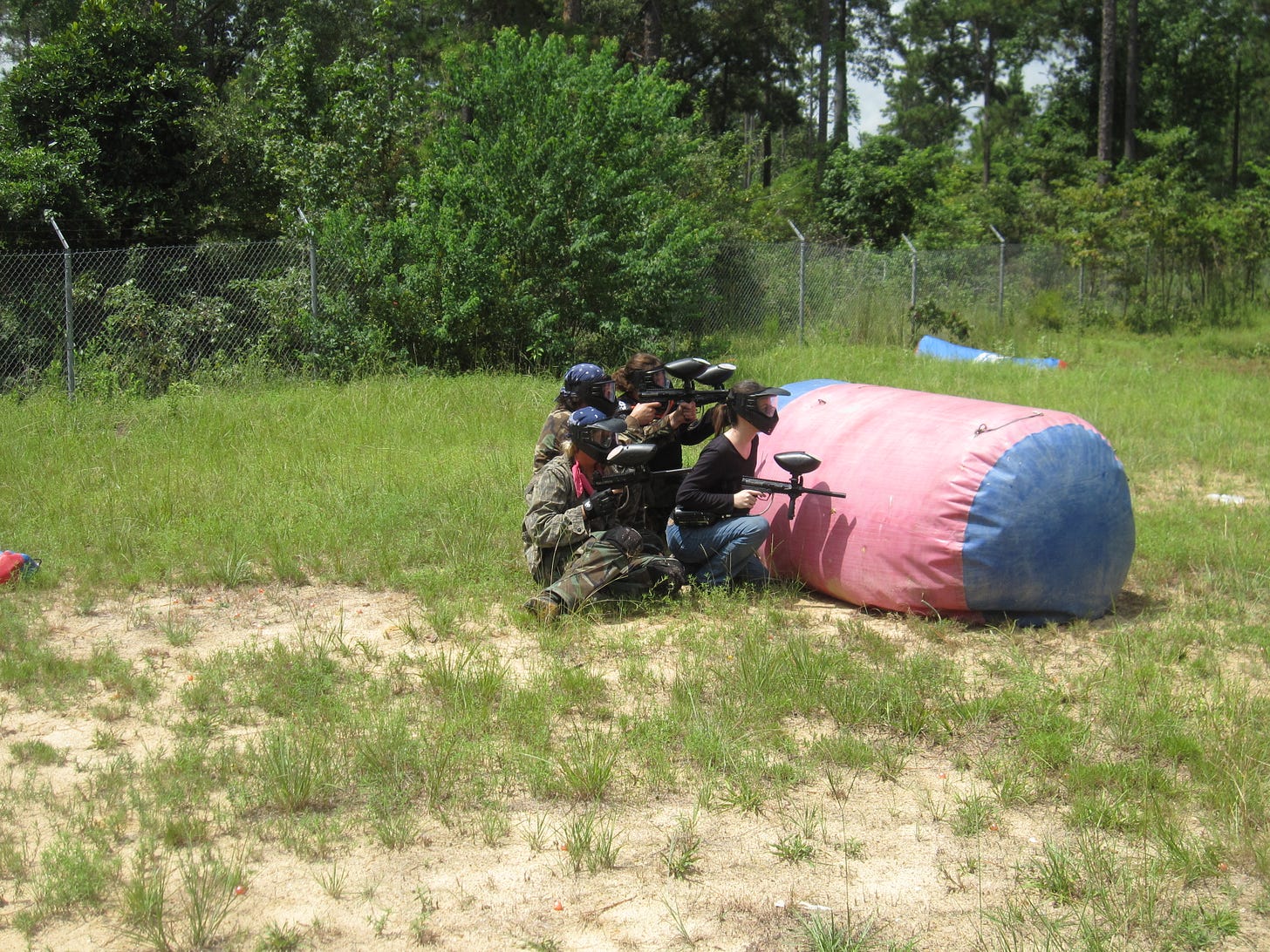
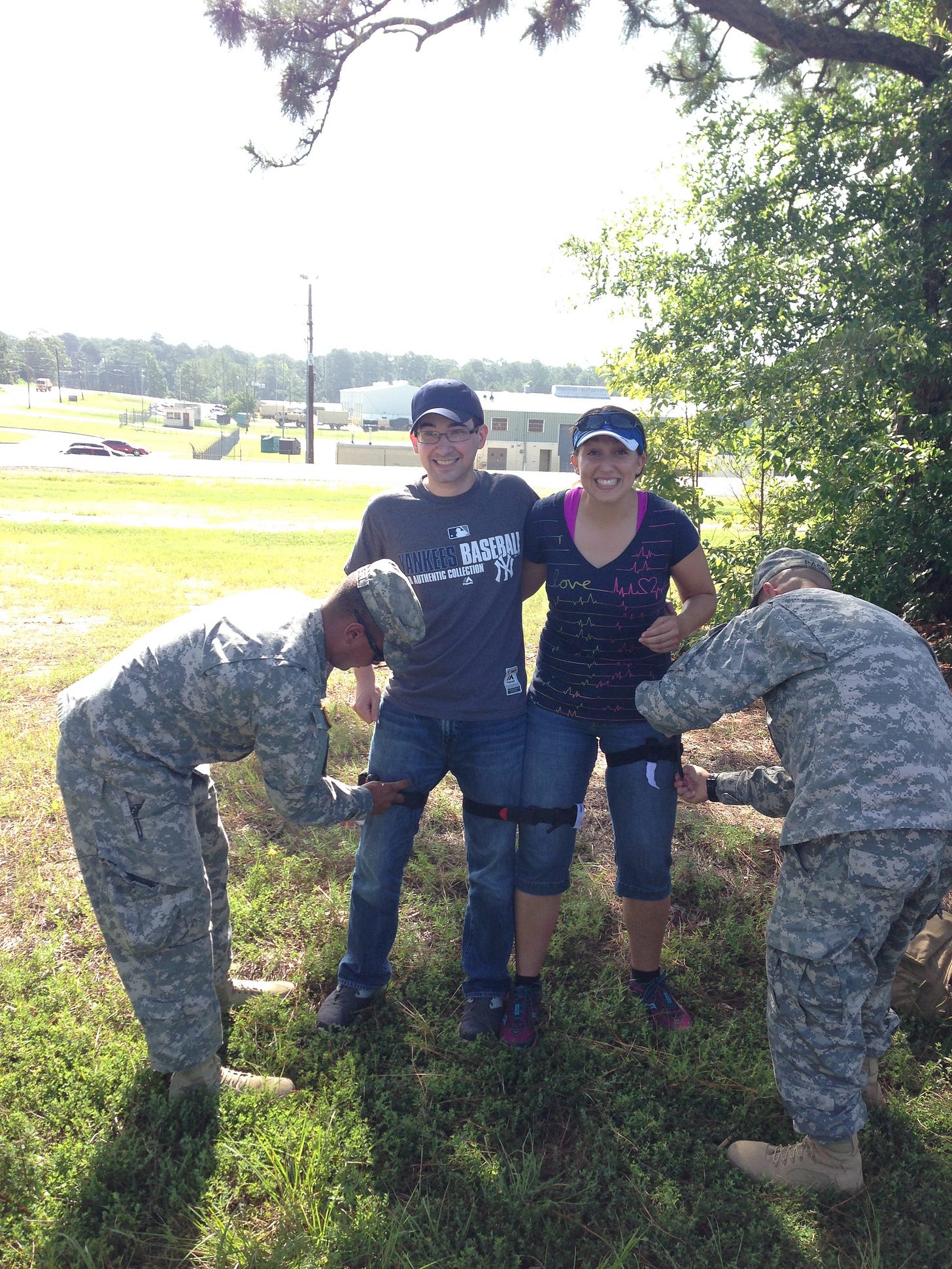
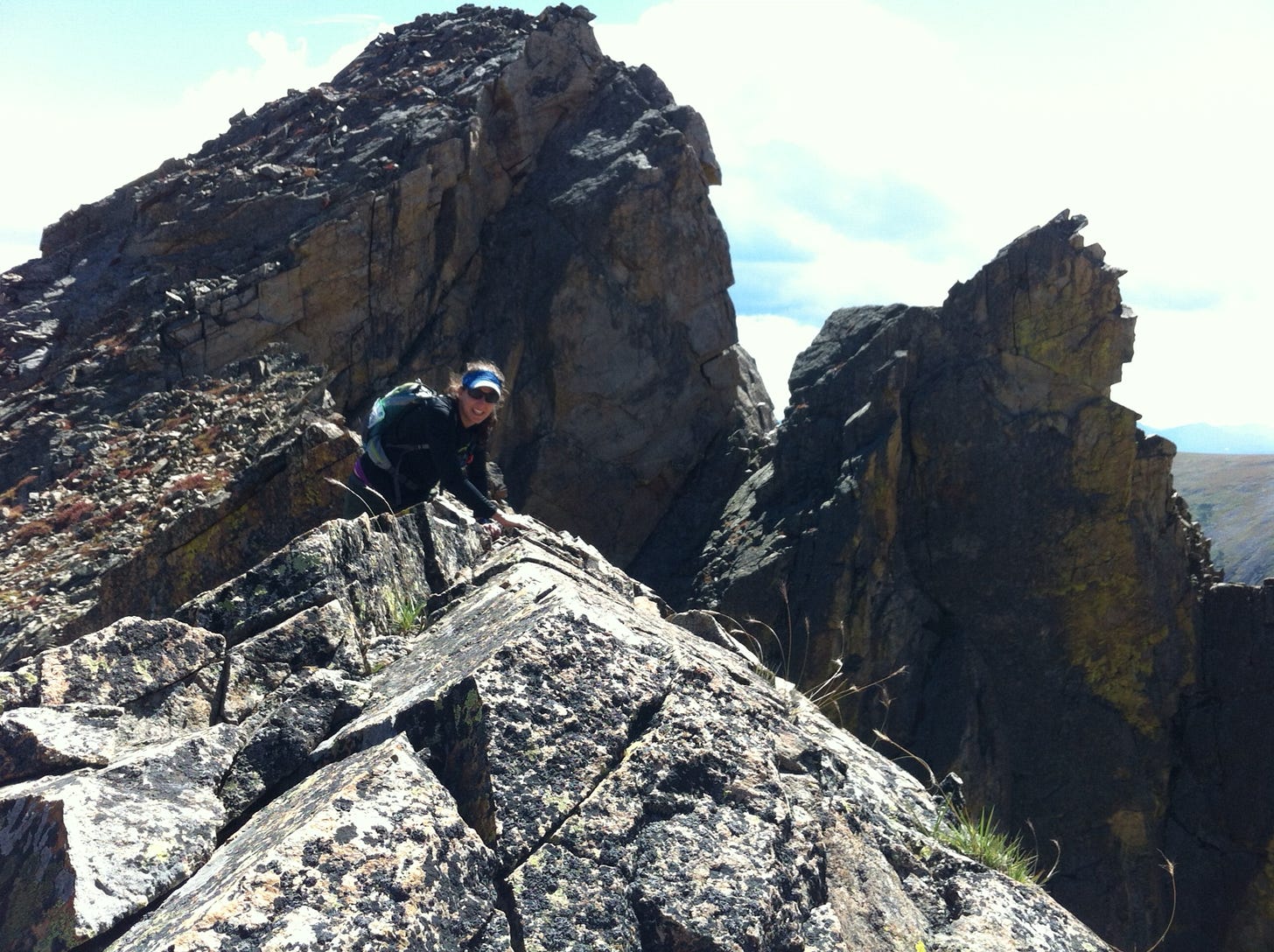
I first heard snippets of some of these stories at the ReimaginED meeting where you and I first met and I am so glad you wrote them down. What a surreal and memorable experience—loved the deep dive into the weird world of military protocol and the chance to peer into a howitzer alongside you!
Fascinating story! And I’m happy all your combat experiences remained in the realm of fantasy.